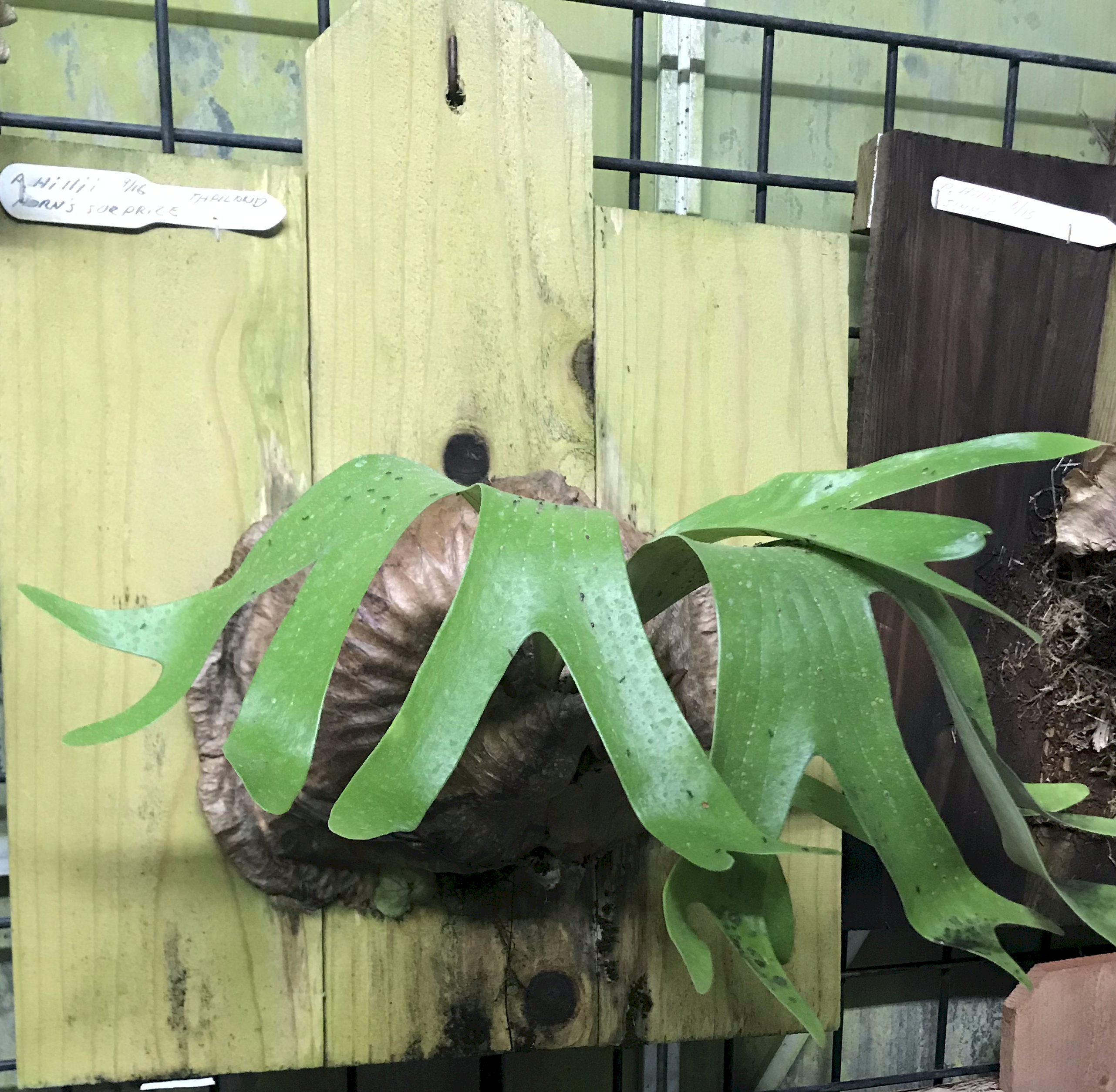|
|
|
Platycerium alcicorne cross madagascariense is a
hybrid dating back to Jerry Horn, a nursery man in Florida, one of the
first experts on platyceriums. This cross hybrid was named P.
Horn's Surprise. I have a Horn's Surprise and a Dawboy, both
from Thailand. Both are
pictured above side by side with the P. Horn's Surprise on the left and the
P. Dawboy on the right. There are two varieties of the
P. alcicorne, one from Africa and one from Madagascar. The
African P. alcicorne is a lighter green than the Madagascar
P. alcicorne. When observing the shade of green, it is
apparent the P. Horn's Surprise is a cross with the African
variety whereas the P. Dawboy is a cross with the Macagascar
variety of P. alcicorne.
One other difference between the two varieties of the P. alcicorne is the shield fronds of the African P. alcicorne may be smoother and the rippling effect of the P. madagascariense may be less pronounced. More examples of the African P. alcicorne need to be studied to confirm this observation.
My observation of the Horn's Suprise which I have not
seen mentioned before is the nature of the fertile fronds to grow
outward from the bud and fold over and curve downward while
maintaining the initial angle of growth from the bud. I find
this true on Don Callard's plant (right), Shaun Pillay's plant (above
right) and my personal plant (below). The fertile fronds have one major fork then smaller forks at the tips. I have also observed that ants tend to nest in the shield fronds where as other adjacent species are not bothered by the ants. |
|
|

The photo on the right is from Luiz Neto on Facebook, Planet Platycerium. It is described as a Alcicorne var. Madagascar 'Wide Form" Notice the configuration of the fertile fronds. They have shallow lobes on the tips with spore patches; then they are deeply lobed to where the wide portion is seen in the center of the frond. I don't believe this trait is found on any other platycerium. |
|
The photo on the right is The reader must realize that many hybrids are a result of accidental mixing of spore when similar plants are grown in close proximity. Even when spore from two species are intentionally crossed, it is always possible for a spore from an unintended species to contaminate the intended cross. After repeated attempts and proof that their progeny have the same traits, then we can agree as to the parentage and define it as a new hybrid and not just a sport or cultivar of a species. This can take a long time with slow growing platyceriums and experienced growers are hesitant to jump the gun and name a hybrid. So when we discuss hybrids, we need to consider all the variables. Soon we will have more definite DNA studies. Until DNA testing is more readily available, and established parent base lines defined, we must look at and compare traits from other species and deduct a logical inference to the actual parentage and these are considered individual plants and not necessarily a hybrids.
|
|
[ Plant Glossary ] |

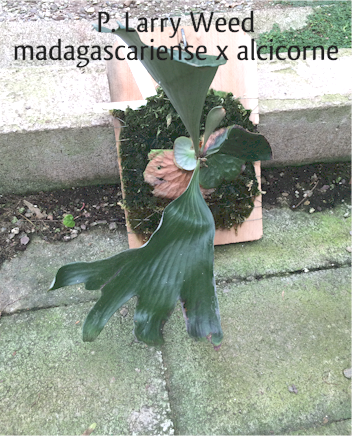 Charles
Alford also has a cross of P. alcicorne and P. madagascariense that's
been named P. Larry Weed and it is similar to the P. Dawboy photo above.
If they are the same, it needs to be resolved which name should be
used, based upon who came first.
Charles
Alford also has a cross of P. alcicorne and P. madagascariense that's
been named P. Larry Weed and it is similar to the P. Dawboy photo above.
If they are the same, it needs to be resolved which name should be
used, based upon who came first.
 The
photo on the left is labeled as P. Horn's Surprise by Siam Exotica in
Thailand and is more representative of the African form of P.
alcicorne. The shield frond has shallower ribs and the color is
lighter green.
The
photo on the left is labeled as P. Horn's Surprise by Siam Exotica in
Thailand and is more representative of the African form of P.
alcicorne. The shield frond has shallower ribs and the color is
lighter green. 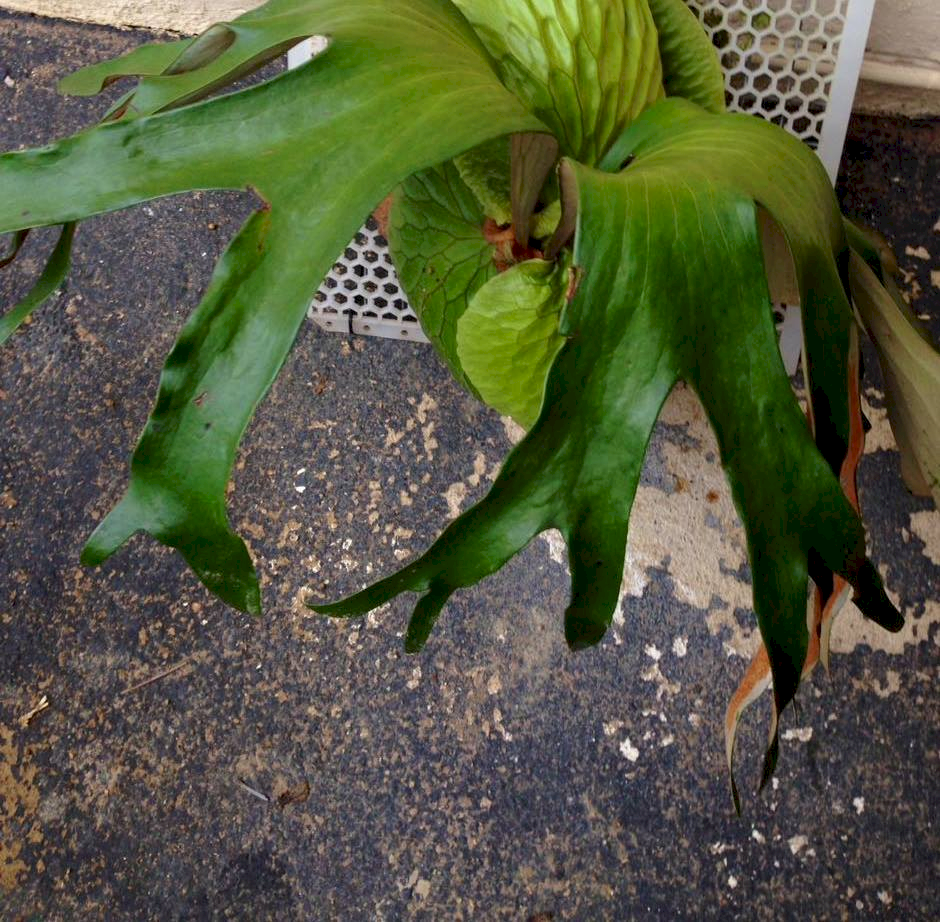 The
photo on the right is from Shaun Pillay in South Africa. This P. Horn's Suprize is the best example of an established
P. Horn's Suprize I
can find on the Internet. The shield fronds are light green and
appear not as deeply grooved. The fertile fronds seem to have a
major fork, then one or two smaller forks again near the tip.
This forking is similar to the P. andinum.
The
photo on the right is from Shaun Pillay in South Africa. This P. Horn's Suprize is the best example of an established
P. Horn's Suprize I
can find on the Internet. The shield fronds are light green and
appear not as deeply grooved. The fertile fronds seem to have a
major fork, then one or two smaller forks again near the tip.
This forking is similar to the P. andinum.
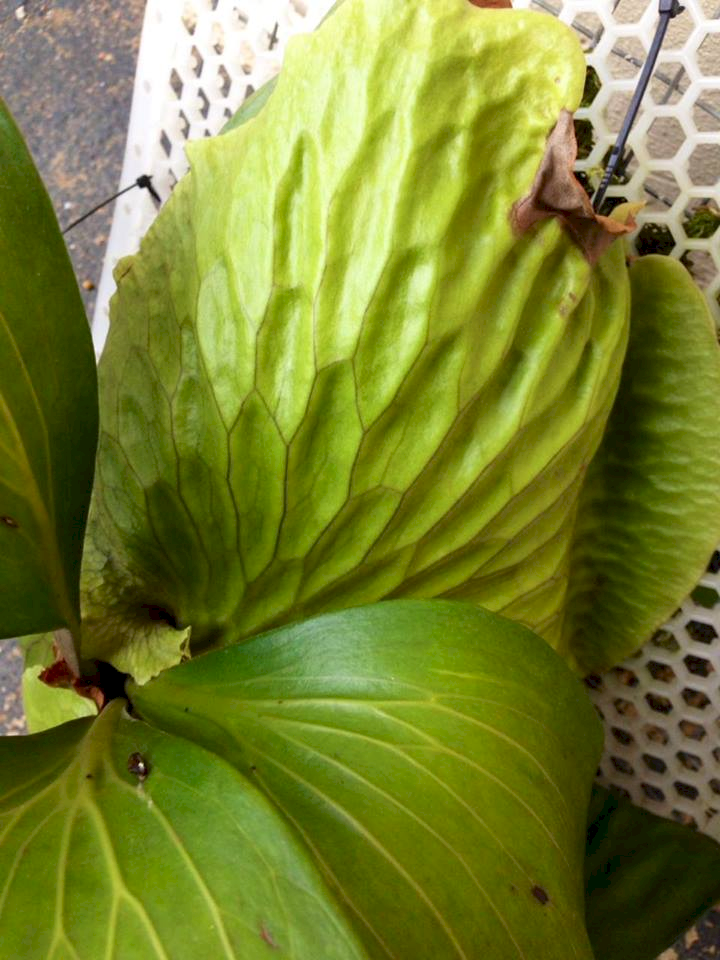 The second
photo below left is the shield of the same plant and shows the P. madagascarinese shield frond characteristic
The second
photo below left is the shield of the same plant and shows the P. madagascarinese shield frond characteristic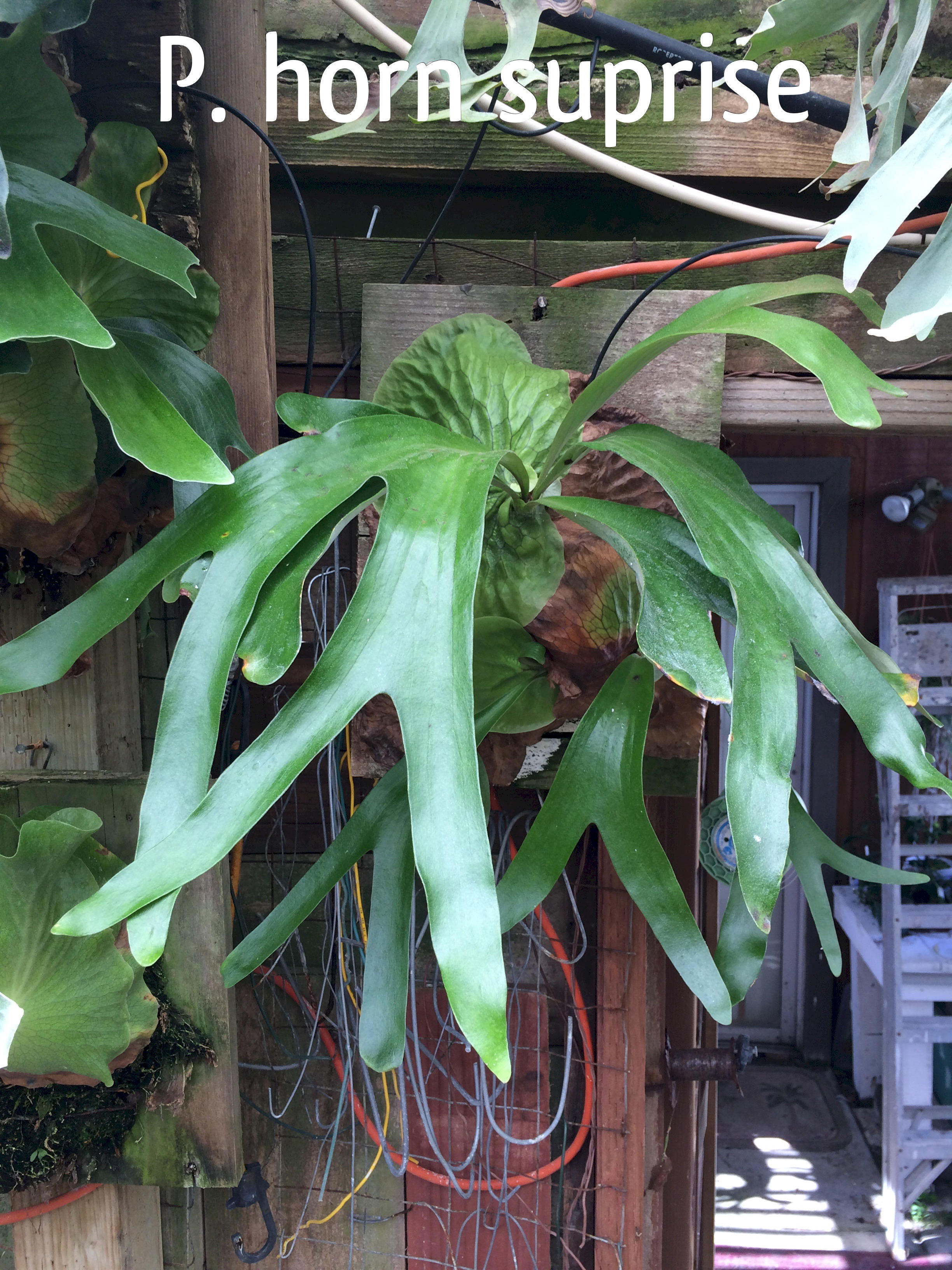 The
photo on the right is a
The
photo on the right is a